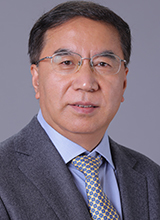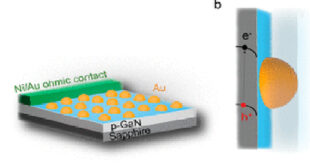Significance
Several remote sensing technologies have been developed for different applications. Differential Absorption Lidar (DIAL) and Coherent Doppler Lidar (CDL) for example find various applications in various fields, including aviation safety, meteorological monitoring and disaster alert. The growing popularity of these techniques is attributed to their ability to achieve real-time remote sensing. However, this requires high data availability, high peak power and high pulse repetition rate (PRR) characterized by high peak power for single-frequency pulse laser transmitters.
Recently, erbium-doped single-frequency pulse lasers with a spectral region ranging from 1.5 – 1.7 µm have drawn significant research attention owing to their high detection efficiency, high atmospheric transmittance and eye safety. To date, erbium-doped fiber amplifiers (EDFAs), injection-seeded solid-state oscillators and planar waveguide amplifiers are the three main transmitters used in wind DIALs and CDLs. Particularly, EDFAs with single-mode optical fibers offers exhibit good compactness, good beam quality and high efficiency. Unfortunately, fiber amplifiers still face a significant challenge in realizing single-frequency pulses with a high peak.
Previous findings have shown that using waveguide structures is an effective solution for overcoming the above challenges. Among the existing methods for obtaining single-frequency lasers with high energy, injecting a single-frequency seed beam into a solid-state oscillator has proved effective. Although it can realize higher energy single-frequency pulses, they fail to run at high PRR. This is due to two main reasons: insufficient gain to prevent the self-excited oscillations and the inability of the oscillator cavity length to scan a wide area at high PRRs. Therefore, more research is necessary to improve injection-seeded solid-state oscillators by addressing factors limiting PRR, such as larger laser spot, bidirectional emission and longer slave cavity.
Herein, Dr. Chaoyong Chen, Professor Chunqing Gao and Dr. Qing Wang from the Beijing Institute of Technology adopted a ring oscillator based on Pound-Drever-Hall (PDH) injection seeding method to achieve single-frequency pulsed lasers at high PRRs. The single-frequency PRRs were set over a wide frequency range between 100 Hz to 12kHz, while the pulse width was 327.3 ns. Besides PDH injection, optical feedback was also employed to improve the optical feedback. Their work is currently published in the journal, Optics Express.
For the first time, the authors reported a single-frequency Q-switched Er:YAG all-solid-state laser with a PRR of up to 10 kHz and pulse energy exceeding 1 mJ for a single-frequency 1645 nm pulse laser. The single-frequency characteristic was attributed to the injection of the seed laser into the Q-switched ring cavity and increasing the PRR by combing the optical feedback and the PDH method. Specifically, the optical feedback proved effective in increasing the gain of the required laser by suppressing the unwanted laser and decreasing its consumption of the inverted population. As a result, stable operation of unidirectional laser was achieved. Furthermore, peak pulse power, average power and average pulse energy of 4.12 kW, 13.5 W and 1.35 mJ, respectively, were achieved at PRR of 10 kHz.
In summary, the new study reported a single-frequency Q-switched Er:YAG all-solid-state laser. PDH injection seeding played a fundamental role in stabilizing the cavity length of the salve cavity, overcoming an inherent challenge associated with reducing the performance of RTP and PZT. It was much easier to obtain single-frequency laser output in the ring cavity than in the standing wave cavity due to the lack of space hole burning effect, which was also beneficial in suppressing the unwanted double pulses phenomenon. In a statement to Advances in Engineering, Professor Chunqing Gao explained that their findings would improve the performance of laser transmitters for potential application as eye-safe CDLs.

Reference
Chen, C., Gao, C., & Wang, Q. (2022). Injection-seeded 10 kHz repetition rate Er:YAG solid-state laser with single-frequency pulse energy more than 1 mJ. Optics Express, 30(10), 16044.
 Advances in Engineering Advances in Engineering features breaking research judged by Advances in Engineering advisory team to be of key importance in the Engineering field. Papers are selected from over 10,000 published each week from most peer reviewed journals.
Advances in Engineering Advances in Engineering features breaking research judged by Advances in Engineering advisory team to be of key importance in the Engineering field. Papers are selected from over 10,000 published each week from most peer reviewed journals.


